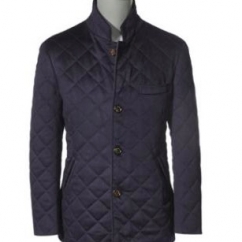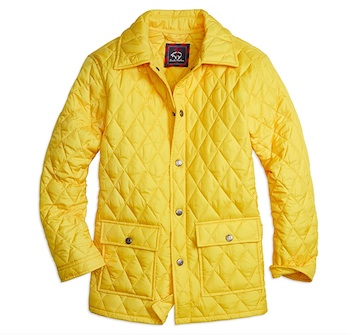Articles and News
Key Luxury Market Trends For 2015 And Beyond | January 14, 2015 (0 comments)

Stevens, PA—While the emerging luxury markets like China make the news, the U.S. luxury market remains the world's largest many times over, with 11 times more millionaires here than China, according to figures from the U.S. Federal Reserve and the Shanghai-based Hurun Research Institute.
It’s a good time to be in the luxury business—but the worst time ever to be complacent. Luxury spending is changing rapidly and businesses that don’t keep up with the shifts will be in serious trouble, according to new research from luxury research firm Unity Marketing. Luxury as status and “because I can” as a justification for paying high prices are out. Understated luxury with meaning is in, and many affluent consumers who during the recession downshifted from ultra-luxe to less-costly premium brands, have found those to be quite satisfactory and see no reason to return to the higher-priced goods unless there’s a marked difference in quality.
Top: A Brunello Cucinelli quilted jacket exemplifies the more understated look of luxury now. Color notwithstanding, it takes a close look to tell it apart from its less costly premium-brand cousin from Brooks Brothers, below:

Here are some of the keys to the luxury market now:
Who are today’s luxury consumers? According to the Federal Reserve Bulletin, there are 11.53 million high net worth (HNW) households, defined as having $1 million assets or more, in the United States.
The U.S. luxury market is still 3.5 times larger than the next-largest market, Japan, according to Bain/Altagamma’s 2013 Luxury Worldwide Market Study.
What is affluent? Affluent is the top 20% of U.S. households, with income starting just above $100,000. The total number of affluents in the United States is 27.6 million households, with average income of $221,000. Of those, the bulk (~24.3 million) are “HENRYs,” (High Earners Not Rich Yet), whose incomes are between $100,000 and $249,999. ~3.3 million are “ultra-affluent,” with income starting at $250,000 and above. Average income for this group is almost twice the average of all affluents, at $411,160.
Top five U.S. cities where millionaires live are (in descending order): New York, Los Angeles, Chicago, San Francisco (includes surrounding metro area), and Philadelphia.
The rich are getting richer, the merely affluent are holding. From 2010-2013, the total number of U.S. households increased by 2.5%. But the number of households at the very top of the income pyramid—the ultra-affluent—grew 10 times as fast, while the “HENRY” segment grew four times faster than the average.
Those in the top 3% of affluence saw their share of the nation’s total wealth rise from 44.8% in 1989 to 54.4% in 2013. The next 7% are hanging in: they’ve accounted for between 19% and 22% of the nation’s wealth for the last 15 years. But the remaining 90% of Americans saw their total share of the nation’s wealth decline from roughly 30% in 1989 to about 25% in 2013.
Affluent consumers typically are managers/executives and professionals. They’re also the best-informed consumers, knowledgeable about government affairs, global issues, and the economy. They work hard and are most concerned about financial security.
Mindset, not money. Affluent buying mentality has shifted since the recession, and a certain level of austerity has remained even as wealth rises. No matter how much cash they have on hand, affluent consumers are more selective, demanding, and careful about what luxuries they buy than they used to be.
Brands need to focus less on aspiration and more on inspiration, as affluent consumers are less focused on status symbols as a means of acquiring confidence or prestige than in previous years. Simplicity is the mood and a “good enough” brand at a reasonable price can be more appealing than a super-pricey prestige brand.
The HENRY group—remember, high earning but not rich yet—are saving money and trading down to less premium brands, even after the recession.
The ultra-affluent, meanwhile, are confident about their finances but still prefer inconspicuous consumption. They’re shopping more like HENRY’s: where the spending gap between ultra-affluent and HENRYs used to be three to four times greater, it’s narrowed significantly. Now the ultra-affluent spend only about twice as much as the HENRY group, often at the expense of heritage luxury brands. For the first time in recent history, says Unity, Hermes, Gucci, and LVMH reported a dip in sales, while hipster brands like Saint Laurent Paris—which has taken on a casual, edgy vibe—are rocketing. Premium affordable brands like Shinola watches and Mini automobiles also are outperforming heritage competitors, and even the decidedly modest-priced Timex Ironman brand has a hip, cool vibe that puts it in demand.
The good news in Unity’s research is that jewelry outperforms every other fashion category among ultra-affluents. 68% of respondents made a luxury-brand jewelry purchase in the fourth quarter of 2013, compared to 50.3% for prestige beauty, 47.5% for clothing, 35.5% for accessories, and 24.7% for sunglasses.
About those Millennials. Millennials are poised to become the biggest-spending generation in history. Although they’re not there yet—Boomers still outspend them exponentially—they are approaching middle age, when affluence peaks. Younger middle-age consumers (35-44) spend one and a half to two times what more mature middle age consumers (45-54) spend.
The transition from Boomer to Millennial as the dominant affluent generation will begin around 2018-2020, firmly take hold between 2026 and 2029, and peak between 2034 and 2040. But Millennials’ view of spending and luxury will be as different from their Boomer parents as the Boomers were from their WWII and Depression-era parents. Millennials will create an entirely new definition and expression of luxury.
Millennials may be willing to trade off a certain degree of affluence and income in order to have more balance in their lives. In a recent qualitative study, respondents asked “when is enough enough?” and expressed a willingness to have fewer material things in order to have more time for vacation, personal interests, and family and friends.
A key challenge for luxury marketers in the future is that not only could their potential customers’ income decline, but also that they may decide that paying high prices for luxury brands is not a priority.
That said, however, luxury tends to be addictive: the more experience & familiarity Millennials on the road to affluence have had about luxury and luxury brands, the more appealing luxury was [to survey respondents].
The takeaway for luxury marketers (and retailers) is to ensure they have sufficient offerings in the premium sector and be sure any ultra-high priced goods can justify their price with real distinction, not just marketing hype.







